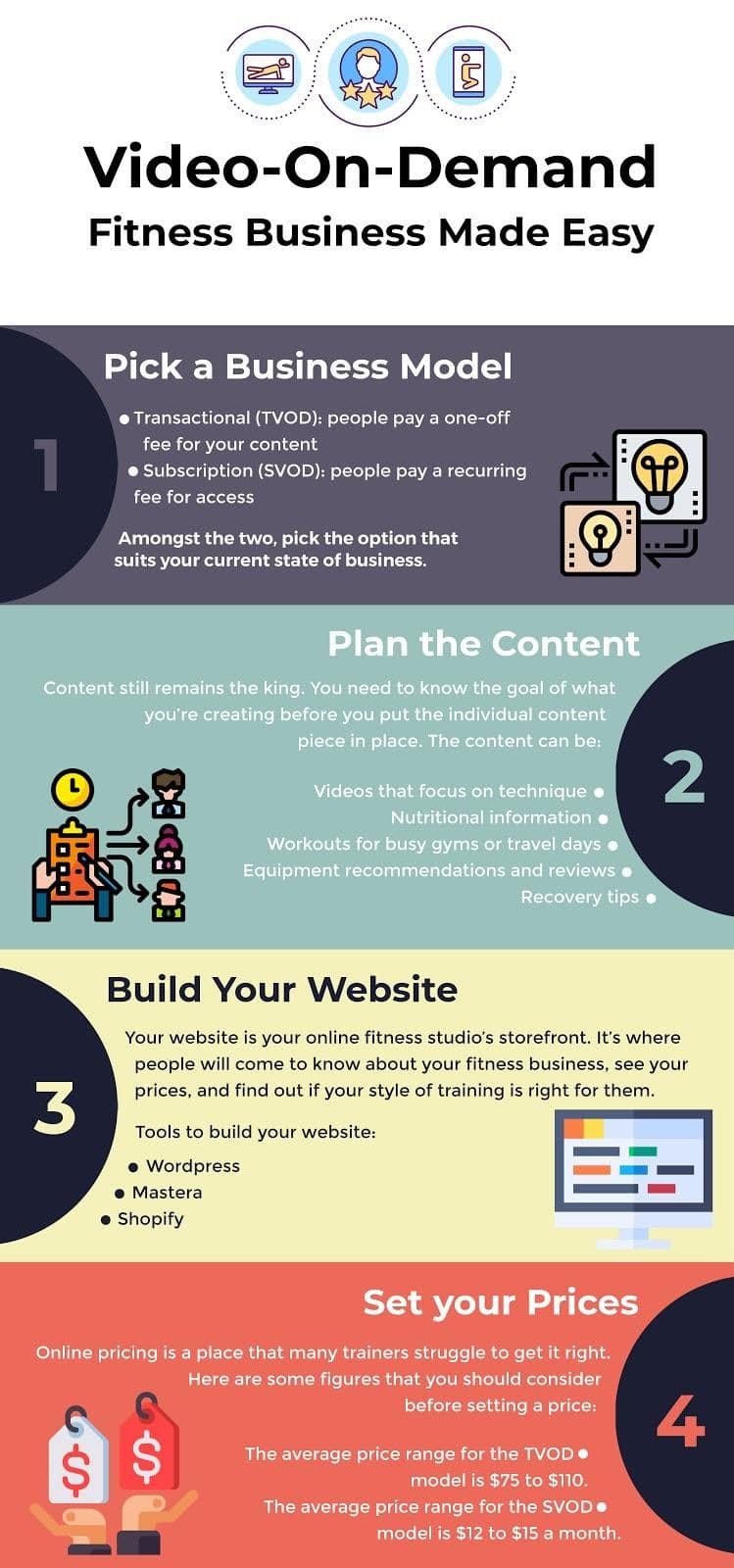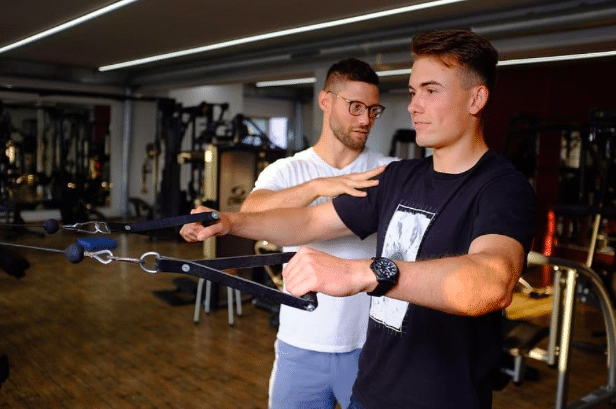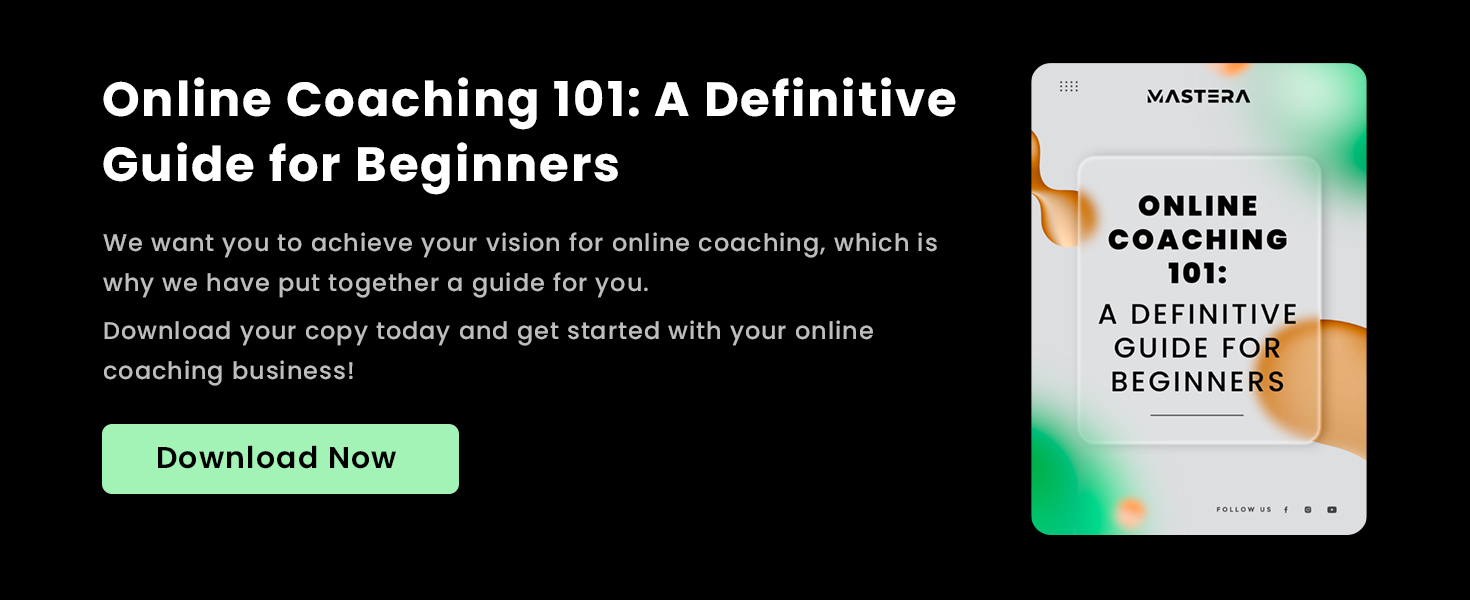COVID- A crisis turned into reality, has made us realize the sheer importance of online channels. Not only to stay relevant but more importantly – To survive. These new ways of working have had a blanket impact, and the fitness industry is no different.
As the pandemic hit and businesses grappled with fight instincts, established fitness brands have already realized the need to build a digital safety net around their brick-and-mortar locations. So, they created digital channels long before the small club owners even thought about it.
What about the smaller players? Other than shock, confusion, and agony, it was the suddenness of the shift that shook their business foundations. For the smaller players, the idea of a digital transition, possibly never hit them or they didn’t have the necessary means or knowhow to get started. However, the ongoing virus pandemic has forced many businesses to go this route anyway.
The pressing issue that remains, for many is how to build a resilient fitness business. One that is scalable.
In this blog, we answer, how individuals can build and scale their video-on-demand fitness business?
Getting Started- Building Your Video-On-Demand Fitness Business
Step 1 – Understanding the Different Business Models
The Video-On-Demand (VOD) fitness business has two primary models. What you choose should depend on what your ultimate goals are in terms of revenue flow.
The two models are:
- Subscription-based VOD
- Transactional VOD
What is Subscription-Based VOD?
This is no jargon. You know this business model up close. You probably already understand even if you don’t know it. Every time you interact with any of the streaming services such as Amazon Prime, Netflix, HBO GO, and more, you’re dealing with someone already familiar with this business model. These are all subscription-based streaming services where you- as a customer- pay a monthly (or yearly) fee to enjoy watching your favorite shows and movie content.
As long as you keep paying the subscription fee, you keep enjoying their services aka content. When you stop paying, you lose access.
Here’s the catch-Subscription-based VOD is a business model that works great for the fitness industry. Caution, it has its advantages and disadvantages. And it is always better if you know them up close. But what exactly are the pros and cons? We weigh those for you.
Advantages:
- Subscriptions create a recurring income source.
- Monthly income becomes more predictable.
- Customers are more likely to continue with the low monthly subscription fee.
- The business model allows greater room for scalability as you add videos or more content
- Promoting/ Marketing content becomes very easy. You can promote your content to both online and offline clients.
- It’s easy to pick up videos and repurpose them for future marketing.
Disadvantages:
- You have to keep creating content all the time. Not a disadvantage but a warning for hard work and dedication
- There is no short-term financial gain. Significant revenue takes a long time to build.
What is Transactional VOD?
In this model for the Video-On-Demand fitness business, you need to create a complete package that you can sell to interested clients at a premium price. There is no recurring pricing. Transactional VOD is a one-time-payment model where the person who buys the package keeps it forever.
For example, you may specialize in providing long-term care for diabetics. Or, you may be a fat-loss expert who can chisel a Greek god(ess) out of anyone.
You may decide to create a whole package that will provide the following:
- Training goals.
- Exercise videos.
- Diet plans.
- Tips for recovery and maintenance.
You can create a complete package for these awesome goals out of these things and make them available in the form of downloadable videos, DVDs, downloadable PDFs, etc. Again, The Transactional VOD model has several advantages and disadvantages.
Advantages:
- You can sell at a higher price.
- Once you create the bundle or the package, you can keep selling it for years.
- It’s also easy to promote. You can advertise the bundle to both online and offline customers.
- You can create an affiliate channel by allowing third-party trainers to sell your bundle.
Disadvantages:
- Continually finding new customers is difficult as the high price often discourages and deflects people.
- Unpredictable income. But that’s the case with any business!
- Creating the entire bundle will require a lot of time and effort. Phew.
So, Which model will you want to adopt? will be your decision. However, many people opt for the subscription model, as it has more advantages than the Transactional model. You can alternatively create a combination of both and maximize your customer base. Base.
Step 2- Planning the Content that Sells
Just as important as deciding on a business model is creating content that sells. Obviously. For any online fitness studio, two types of content come to mind.
- Studio-level content: More general content focused on the services your studio provides.
- Individual-level content: Content designed to address the individual needs of specific clients/customers.
Acing The Studio-level Content
Start by asking these basic questions:
- What is your studio offering? Yoga, cardio, strength – what is your specialty?
- When clients visit your online studio, what should they expect to see?
- What are you going to teach them, and how are you going to coach them online?
- What resources do you need, and do you have everything in place?
You will start to get an idea of the overall structure of your online studio, should take when you begin with these questions. And start looking for the answers.
Again, No matter what you do, you will need your website to look serious and professional. While having a YouTube and Instagram can be useful, having your website is key for being a serious studio. Ask yourself?
- What type of branding will you need? (logo, color, etc.) The brand equity you build will define your online persona and will be the key to building your ‘online’ reputation. success or failure.
- What should be the focus of your videos?
- Do you need to provide nutritional information?
- Should you provide equipment reviews and information?
- Should you provide printable workout plans?
Remember, for many people, the first impression is often the last. You need to convince both potential clients and existing ones that your online studio provides value and results. Think and invest a lot of time into the studio-level content creation phase and it will pay off for you. And we swear by it!
The Individual-level Content
Creating individual-level content is no easy task, either. Every single client you have or acquire is different. Each one has different physical needs. But, you can Although each client is different, you can still group them into broad categories. For instance, if you are a strength trainer, you can organize arrange your clients by:
- Experience level
- Age
- Body type
- Gender
- Training environments
- Meal plans
- Work, timings, etc
Once you complete the categorization phase, you can think of the content you have to create for each category. Finally, you need to think about the delivery of the content. You can Consider the following:
- Do you need to create videos/courses that follow a sequence?
- Do you need to record your videos/courses in front of a class or alone?
- Do you need a live streaming feature?
- Do you need to have written content (blog posts) on your website?
- Do you need to create downloadable files like PDFs, images, etc.?
The content creation phase can be extremely overwhelming, but don’t get discouraged. Just remember to ask the right questions, and you’ll find yourself where you need to be.
We are here! Launching Your Website
By now you have realized the importance of building your website. We say it is the digital face of your brand. Your online shop. Your pathway to resilient business. Now, how to get started?
To launch your website successfully, you will need the following:
- A domain name.
- A server.
- A blogging service such as WordPress, etc.
- A proper theme.
Going for WordPress is always a good option because of the following:
- It is free and immensely powerful. With WordPress, you can design and create any type of website conceivable.
- It is incredibly user-friendly. You don’t need to know how to code.
- There is a large pool of free and premium themes. You can buy any paid theme for a small price.
- Hundreds and thousands of plugins available will allow you to add just about anything to your website.
- You can integrate online payment portals.
- Dozens of help forums will help to resolve any technical issue you face with WordPress.
Now how about Setting the Right Price
Setting the price is the final stage of building your Video-On-Demand fitness business. But how to do that? Here is the rule of thumb to follow:
“Don’t be greedy!”
Here are some figures that you should consider before setting a price:
- The average price range for the Transactional VOD model is $75 to $110.
- The average price range for the Subscription VOD model is $12 to $15 a month.
- The average monthly earning of online fitness studios with a 7-day free trial is $9600.
- The average monthly earning of online fitness studios without a free trial is $5600.
For pricing, try to stay within the given range for the Transactional model and Subscription model. However, you should consider offering a few more benefits such as:
- Rebate for a long-term subscription plan such as a 6-month subscription or a 12-month subscription.
- Rebate for purchasing two or more bundles or packages in the Transactional model.
- You can provide monthly free group Q&A sessions when people buy a 6-month subscription plan.
- You may consider providing a one-on-one Q&A session through live streaming for anyone who purchases a 12-month subscription.
- Offer discount coupons for special times like Christmas, Halloween, 4th of July, etc.
Remember, pricing is an essential factor in business success, especially in the fitness industry, where there are a whopping 25,000 apps available on Google Play Store alone! That’s a big competitor base.
But that’s not the end. A recent report says that there are 210,000 health and fitness facilities across the globe, catering to 184 million members. The United States alone has 41,370 facilities generating a revenue of $35 billion a year.
Bottom line? You will face unprecedented competition when you take your fitness business online. This competition will keep growing. So, scaling your business is the next big challenge.
Know where your clients are – Demographic questions
Here’s a list of questions to uncover who your ideal fitness client is?
- Is your client male or female? It’s important to know this as the fitness goals vary from person to person.
- What age groups does your client fit into? You want to provide a tailor made fitness regime to your clients, right? You ought to know their age and plan the fitness schedule accordingly.
- Does your client live in a city, small town, or the countryside? You may wonder how important it is! Depending on where your client resides, you can create a different brochure that will include prices as per the geo location.
Scale Your Video-On-Demand Fitness Business
OTT Apps
You have to remember that a critical factor for the success of an Internet-based business is the ability to deliver high-quality video content through various digital channels. When it comes to the Video-On-Demand fitness business, you need to have the ability to stream your video content to as many platforms as possible with a single push of a button. One way is possible through OTT or Over-the-Top apps.
With OTT apps, customers can stream videos instantly on their mobile devices and TVs using various devices such as Fire TV, Android TV, Roku Box, Apple TV, etc.
The real challenge is to create OTT apps for all such devices. It can be extremely costly. Small club operators may not be capable of significant investments.
So, what is the solution?
Using a third-party service like Gleantap is the cost-effective alternative that many small businesses use. These are all OTT platforms that allow creating and deploying apps in as little as 30 days.
There are several benefits of using third-party platforms, such as:
- Some platforms also allow the creation of fully-functional websites without incurring any additional cost.
- They provide detailed analytics data on how your videos are performing and how much revenue they earned.
- They also offer a centralized Content Management System (CMS) where you need to update your new content only once from the centralized admin area.
- These platforms also allow adding in-app purchases, in-app notification, and offline viewing features.
The more platforms you cover, the wider you’ll reach, which helps foster faster growth.
Even Social media platforms are powerful, and you must utilize them to gain a new audience base. Platforms like YouTube, Instagram, Facebook, Twitter, etc. are all great. However, since you are going after the Video-On-Demand fitness business, opting for YouTube and Instagram makes the most sense to focus on.
That, however, doesn’t mean Facebook or Twitter or other platforms cannot work for you. Remember that these platforms are usually free, and you should be ready to give away free training sessions to gain new subscribers.
Once you gain subscribers, you can ask them to check out your website and the dedicated apps. Serious folks who love your free content will end up becoming paid subscribers.
As your subscriber base on these social media platforms keeps increasing, you can monetize those channels by participating in their revenue-sharing advertisement model.
Remember, your online business can reach people no matter where they are, so be sure to keep the doors that door open!
Find out more methods of scaling your fitness business by focusing on customer retention.
In Conclusion
Building and scaling your Video-On-Demand business takes a lot of effort and planning but can pay off in spades. This new normal, as people are coined the post-COVID time- it is important that businesses leverage the online connectivity to thrive and prosper.
You must work to come up with new ideas that are exclusive to your business and offer value to potential customers.
No one is looking to buy into something they don’t think is going to improve their life. So focus on what you know, and get ready to teach the world!








